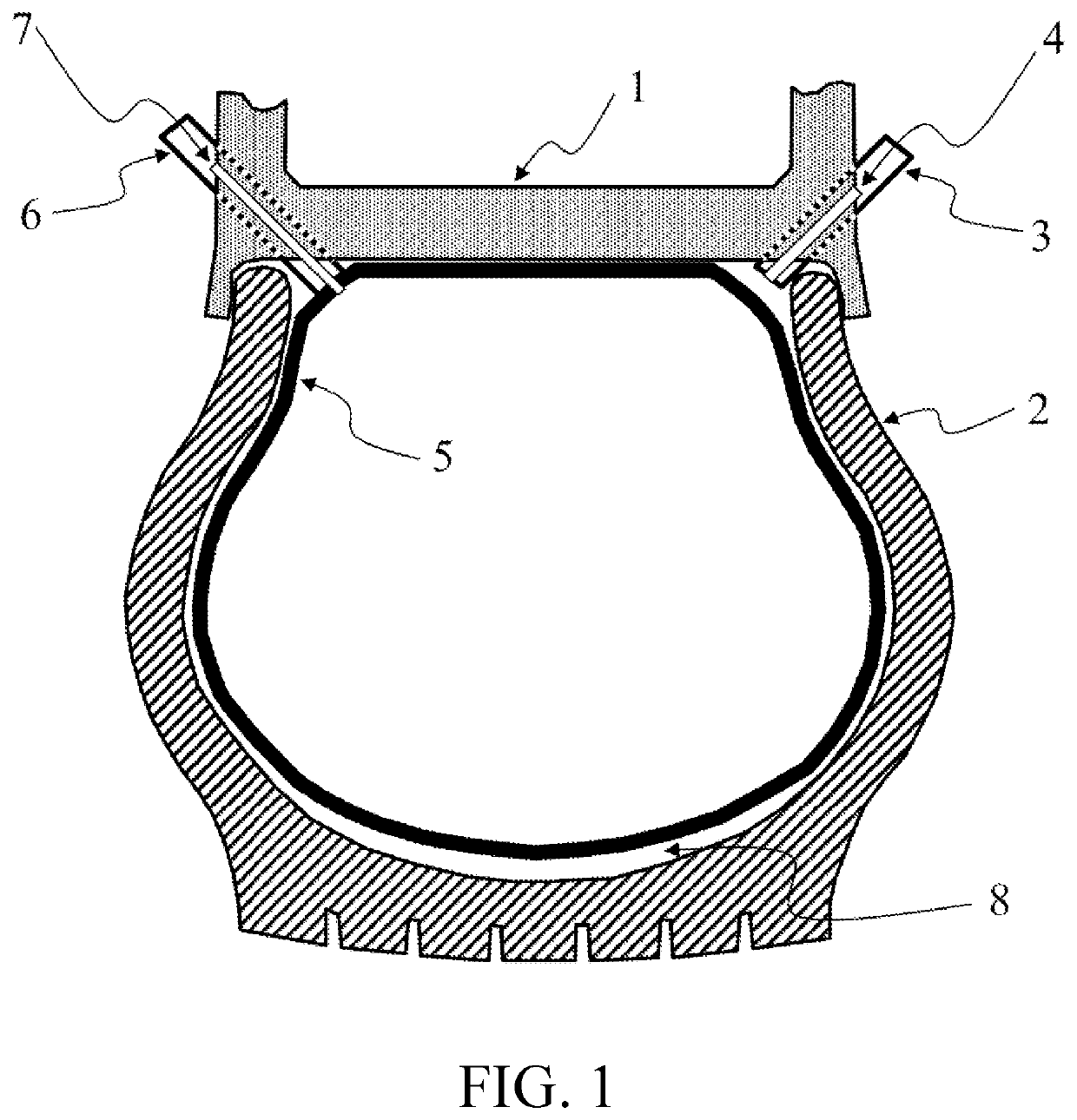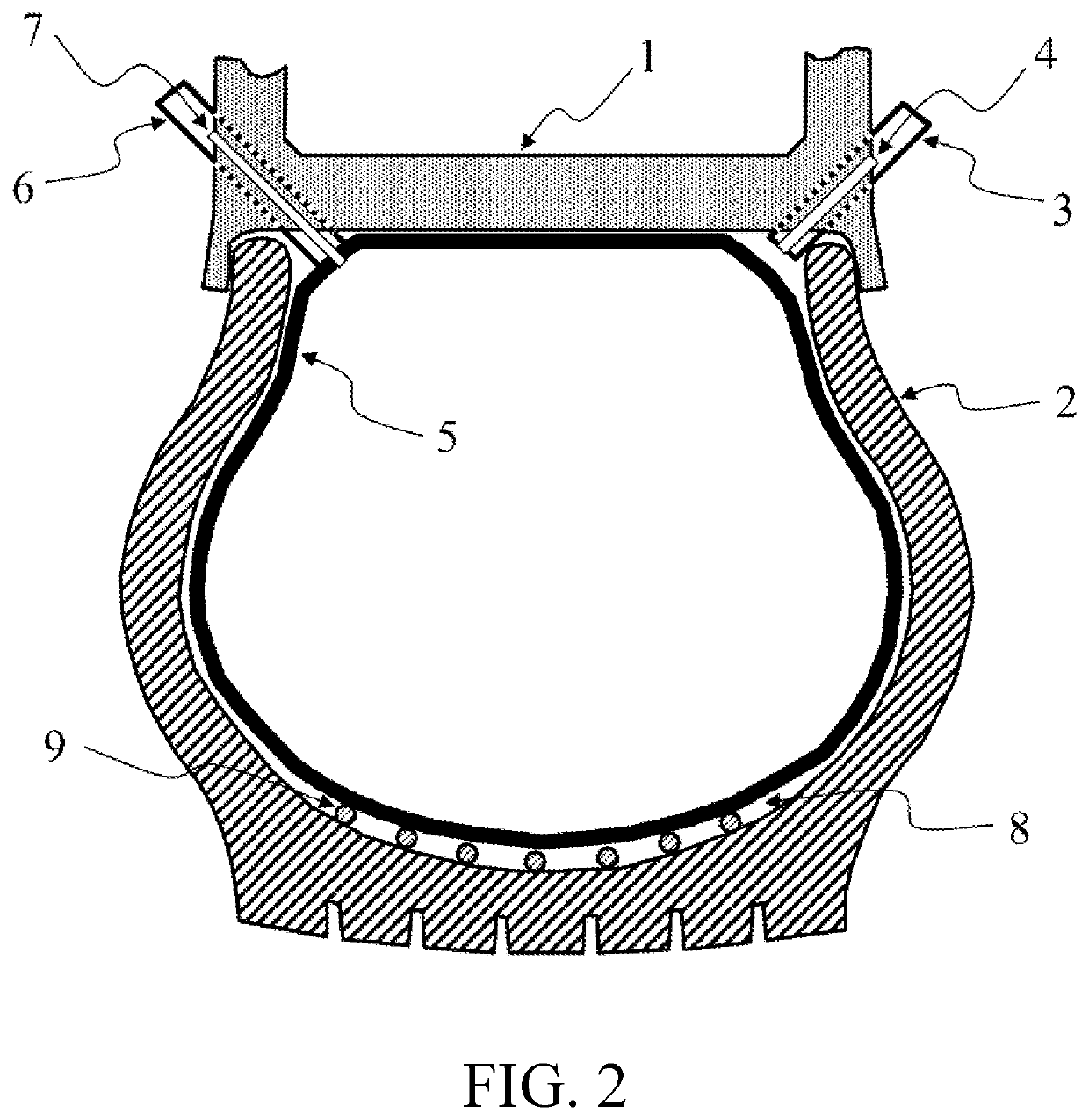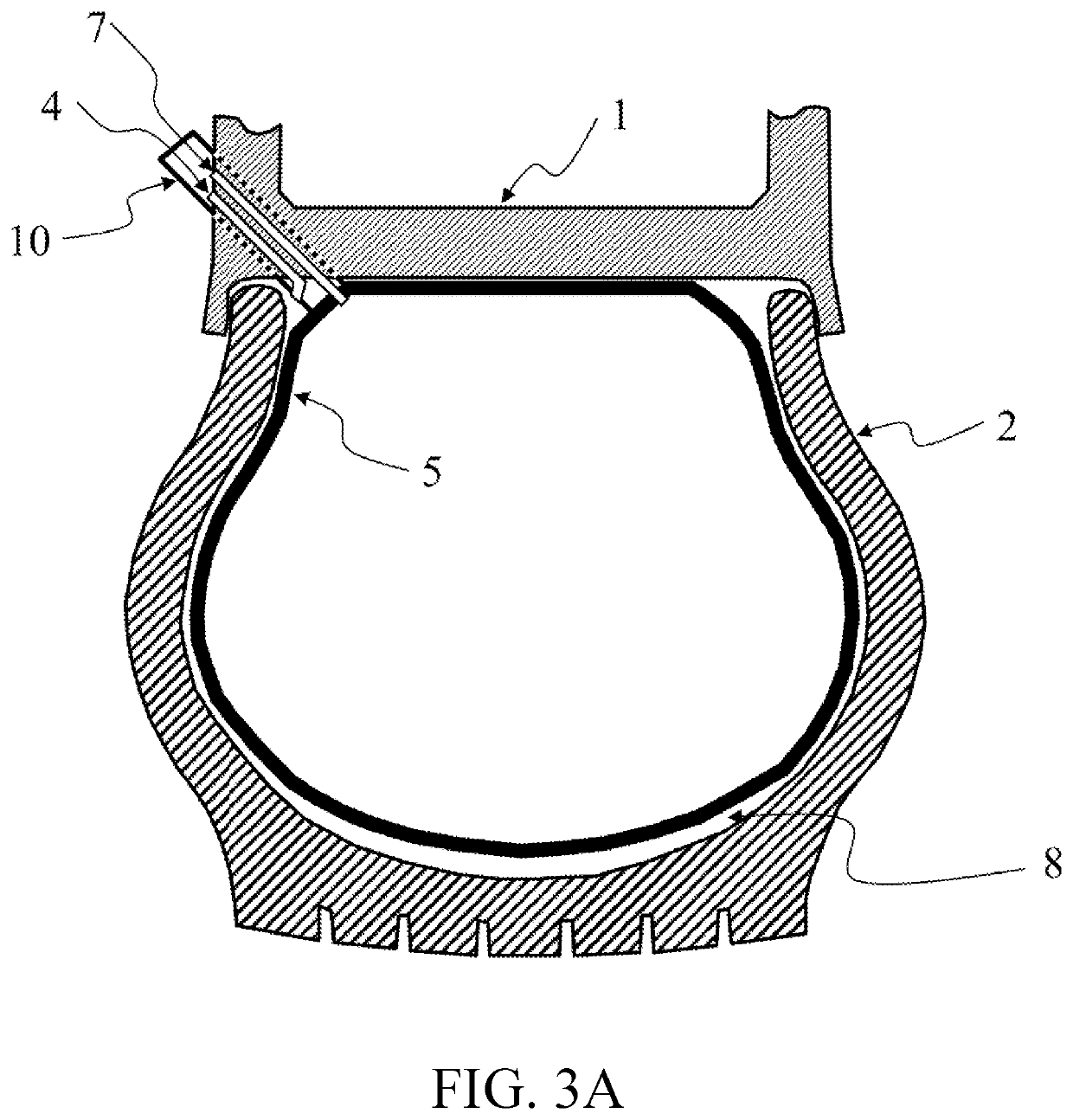Self-healing tire
a self-healing, tire technology, applied in the direction of rims, vehicle components, separate inflatable inserts, etc., can solve the problems of high manufacturing cost, inability to recycle and reuse excess sealant, and inability to refill sealant, etc., to achieve easy repair, low installation cost, and easy steering
- Summary
- Abstract
- Description
- Claims
- Application Information
AI Technical Summary
Benefits of technology
Problems solved by technology
Method used
Image
Examples
Embodiment Construction
[0026]The present disclosure will be apparent from the following detailed description, which proceeds with reference to the accompanying drawings, wherein the same references relate to the same elements.
[0027]Referring to FIG. 1, a self-healing tire according to a first embodiment of this disclosure comprises a rim 1, a tire casing 2, a first valve stem (a first nozzle) 3, a tire casing channel 4, an inner tube 5, a second valve stem (a second nozzle) 6, an inner tube channel 7, and a sealant storing layer 8 disposed between the tire casing 2 and the inner tube 5. The rim 1 has a first nozzle hole and a second nozzle hole. The tire casing 2 is installed around the rim 1. The inner tube 5 is disposed between the rim 1 and the tire casing 2. The first valve stem 3 protrudes from the first nozzle hole, and second valve stem 6 protrudes from the second nozzle hole. The tire casing channel 4 is disposed inside the first valve stem 3 and connects to the space between the tire casing 2 and...
PUM
 Login to View More
Login to View More Abstract
Description
Claims
Application Information
 Login to View More
Login to View More - R&D
- Intellectual Property
- Life Sciences
- Materials
- Tech Scout
- Unparalleled Data Quality
- Higher Quality Content
- 60% Fewer Hallucinations
Browse by: Latest US Patents, China's latest patents, Technical Efficacy Thesaurus, Application Domain, Technology Topic, Popular Technical Reports.
© 2025 PatSnap. All rights reserved.Legal|Privacy policy|Modern Slavery Act Transparency Statement|Sitemap|About US| Contact US: help@patsnap.com



